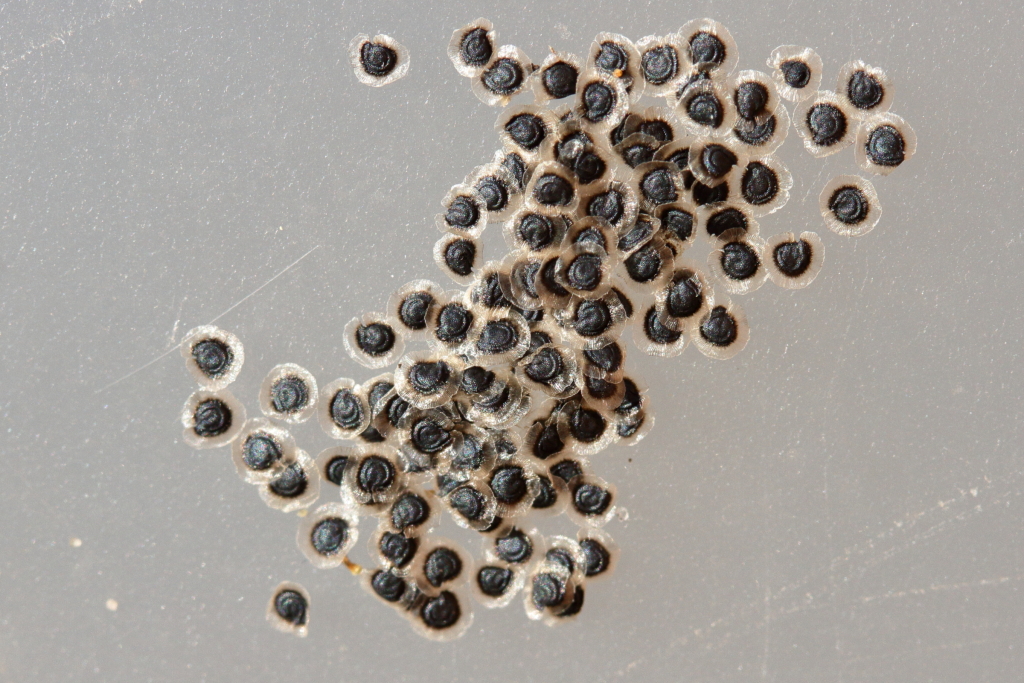Spergularia tasmanica
(Kindb.) L.G.AdamsAnnual to perennial; rootstock thick, woody; stems robust, more or less erect, 10–40 cm, flattened above. Leaves linear, flattened, mucronate to shortly awned, hardly fasciculate, fleshy, 10–60(–80)mm long, 1–2 mm wide, sparsely glandular-ciliate; stipules scarcely acuminate, (3–)4–6(–7)mm long, shortly connate in inflorescence, not silvery. Inflorescence lax, monochasial above; pedicels often reflexed in fruit, much longer than sepals, glandular-hairy. Flowers 7–10 mm diam.; sepals 4–7 mm long, with dense glandular hairs 0.l–0.25(–0.5) mm long; petals 1–2 mm shorter than sepals, pink; stamens 5–10. Capsules ovoid, 1–2 mm longer than sepals; seeds 0.7–1.1 mm long, prominently blunt-tuberculate, pitch-black, scariously winged or rarely some unwinged in same capsule, the wing-margin entire to erose-denticulate. Flowers mostly Oct.–Dec.
LoM, MuM, Wim, VVP, VRiv, MuF, GipP, OtP, WaP, CVU, GGr, DunT, EGL, EGU, WPro, HSF, HNF, OtR, Strz. Also WA, SA, NSW, Tas. Widespread in marine and inland saline wetlands and sometimes non-saliine soils prone to waterlogging.
This species has a similar habit and favours a similar habitat to the adventive Spergularia media, but is readily distinguished by its black, tuberculate seeds (as opposed to the red-brown, smooth seeds of S. media). The taxon is so widespread in natural marine and inland saline wetlands, especially of south-eastern Australia and New Zealand, that it must be seriously considered native to Australasia.
 Spinning
Spinning




